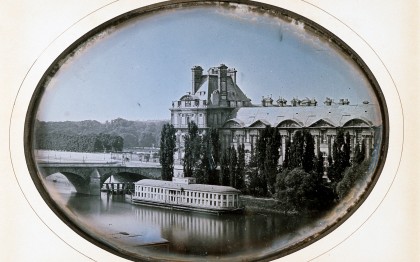Invented by Nicéphore Niépce and Louis Daguerre, photography was to have a powerful impact on the imagination of young Impressionist painters. Daguerreotype, the first process to be commercialized in 1839, consists of a plate of silvered copper on which the image is impressed, with extremely fine details. However it has a major disadvantage: it cannot be reproduced in series, each plate being unique. This is why it was progressively superseded by other processes using negatives on paper, then on glass, making it possible to have multiple prints. Olympe Aguado and Firmin Eugène Le Dieu, both pupils of Le Gray, in turn developed variations on the theme of reflections. This type of composition, which divides the image in two with a straight line creating a reversed mirror effect, a metaphor for reality and illusion, appears in many works of the “early” period of photography, due especially to Benjamin Brecknell Turner, Edouard Baldus and Hippolyte Collard.

